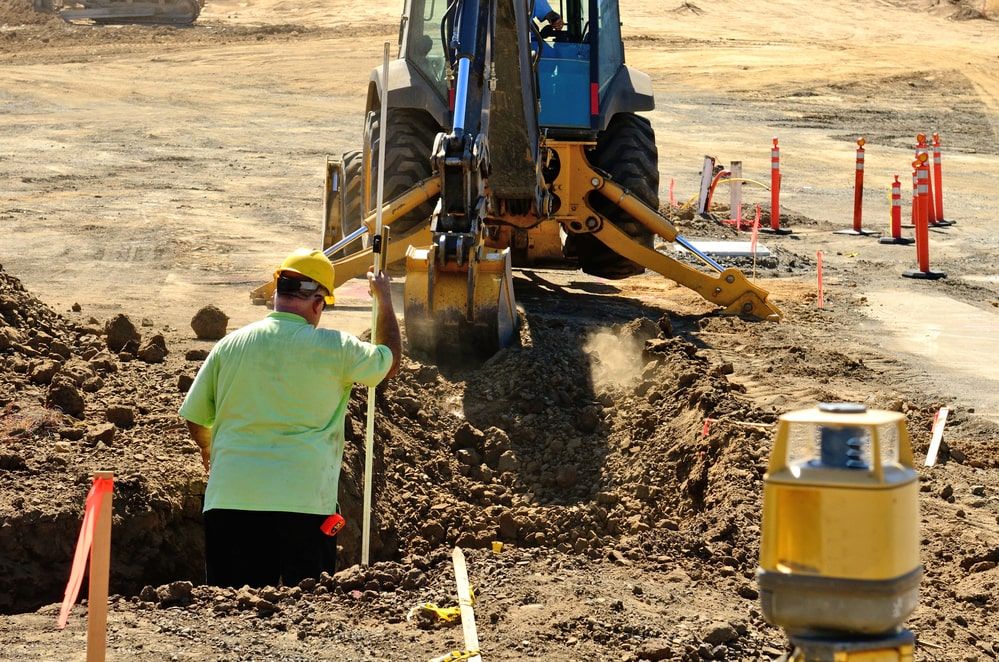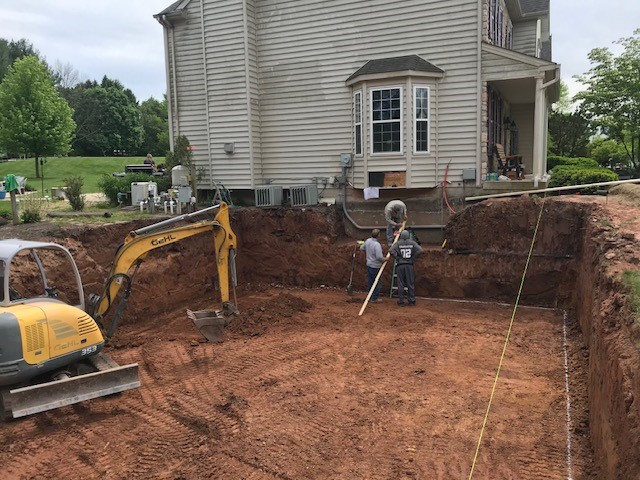Residential Excavating Ohio - Specialized Excavation for Ohio Homes
Wiki Article
Introducing the Art of Excavation: Pro Tips for Safe and Efficient Digging
In the realm of excavation, the mastery of effective and risk-free digging is an art form that requires precision, expertise, and adherence to well-known techniques. As dirt is turned and planet is relocated, the intricacies of excavation disclose themselves, requiring a keen understanding of equipment, dirt structure, security methods, and ecological considerations. The expertise required to navigate these elements properly can indicate the difference in between an effective excavation project and a possible catastrophe. By deciphering the layers of this detailed procedure, a world of techniques and understandings awaits those looking for to raise their excavation abilities to new elevations.Value of Correct Equipment
To guarantee the security and performance of any kind of excavation task, utilizing the appropriate equipment is vital. Excavation jobs vary in range and intricacy, varying from tiny residential landscaping jobs to large-scale construction undertakings.Excavators are essential items of equipment in any kind of excavating operation. These flexible devices been available in various sizes to suit different project requirements. Small excavators are suitable for smaller sized tasks, while larger excavators deal with much more comprehensive jobs effectively. Backhoes are one more vital equipment type, combining the features of a loader and an excavator in one machine. They are useful for jobs calling for adaptability and ability to move.
Excavators excel in jobs that call for pushing big amounts of soil or debris. By spending in the suitable tools, excavation jobs can be finished securely, on time, and with precision.
Recognizing Soil Structure
A thorough understanding of dirt composition is fundamental for performing excavation jobs with precision and safety. Comprehending the different types of soil is important as it directly impacts excavation methods, equipment selection, and overall task performance.Sand fragments are the biggest and give great drain however provide little cohesion. Silt particles are smaller sized than sand yet bigger than clay, using modest drain and cohesion. Clay particles are the smallest and provide high communication yet inadequate drain. Organic issue, such as rotting plant material, affects soil fertility and security.
Before commencing excavation, carrying out dirt tests to establish its make-up and features is essential. This details assists in selecting the ideal devices, executing precaution, and developing excavation strategies customized to the particular soil conditions - lancaster excavation. By understanding dirt make-up, excavation experts can enhance task end results while ensuring safety and security and adherence to best techniques
Safety Actions and Protocols
Recognizing soil structure is the keystone upon which precaution and procedures for excavation tasks are built, making sure the health of workers and the success of the endeavor. There are several essential procedures that must be executed to minimize risks and stop crashes. when it comes to safety during excavation.Most importantly, read review prior to any type of digging starts, a complete examination of the website should be conducted to determine any kind of possible threats such as below ground energies, unpredictable dirt conditions, or nearby structures that could position a risk. It is vital to have an experienced person oversee the excavation process to make sure that all security procedures are adhered to purely.
Additionally, all workers involved in the excavation must be effectively educated in safe excavating methods and the appropriate operation of equipment. By sticking to these safety and security procedures and procedures, excavation projects can be completed successfully and without occurrence.
Efficient Excavation Planning
When starting an excavation task, careful planning is important to guarantee efficiency, safety, and effective results. Effective excavation preparation includes several vital steps that are essential for the smooth implementation of the job. The primary step is to carry out a complete site analysis to determine any potential dangers, such as underground energies or unsteady soil problems. This information is essential for establishing a detailed excavation strategy that consists of precaution and take the chance of reduction methods.Once the site analysis is complete, the next action is to develop a clear timeline and schedule for the excavation activities. This consists of determining the sequence of jobs, tools requirements, and manpower allotment. Proper organizing aids prevent hold-ups and guarantees that the job remains on track.

In addition, communication among all staff member is paramount during the planning stage. Clear instructions, regular updates, and effective coordination are essential for a successful excavation job. By spending effort and time in meticulous preparation, excavation blog groups can significantly boost performance, decrease threats, and attain effective results.

Managing Ecological Considerations
With increasing focus on environmental sustainability in building and construction methods, taking care of environmental factors to consider has become a crucial aspect of excavation tasks. Excavation activities have the possible to impact the surrounding setting through dirt erosion, debris runoff, habitat disruption, and contamination of water sources. To mitigate these dangers, it is essential to apply best techniques that prioritize ecological defense.
Additionally, appropriate waste monitoring is essential to stop dirt and water contamination. Applying treatments for the disposal of dangerous materials, recycling of waste materials, and decreasing the usage of hazardous chemicals can significantly decrease the environmental influence of excavation jobs. By integrating these techniques into excavation preparation and execution, building companies can make certain that their tasks are not just risk-free and productive yet likewise ecologically responsible.
Conclusion
Finally, grasping the art of excavation needs an extensive understanding of appropriate equipment, dirt structure, safety measures, and reliable company website planning. By following these standards and thinking about environmental aspects, excavations can be carried out securely and effectively. It is essential to focus on safety and performance in every digging project to make sure successful end results.As soil is transformed and earth is moved, the ins and outs of excavation reveal themselves, requiring a keen understanding of tools, soil make-up, security protocols, and ecological considerations.To make sure the safety and effectiveness of any kind of excavation job, making use of the suitable devices is paramount.A detailed grasp of soil make-up is fundamental for performing excavation tasks with precision and security. Recognizing the different kinds of dirt is crucial as it directly influences excavation methods, equipment choice, and total project efficiency. By comprehending dirt composition, excavation experts can boost project outcomes while making sure safety and security and adherence to best methods.
Report this wiki page